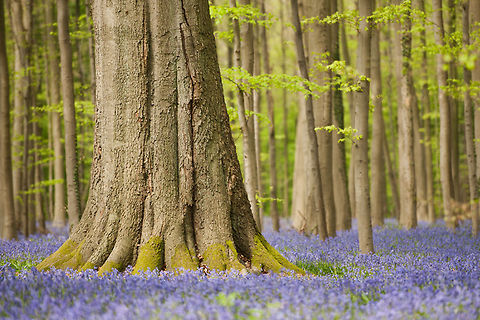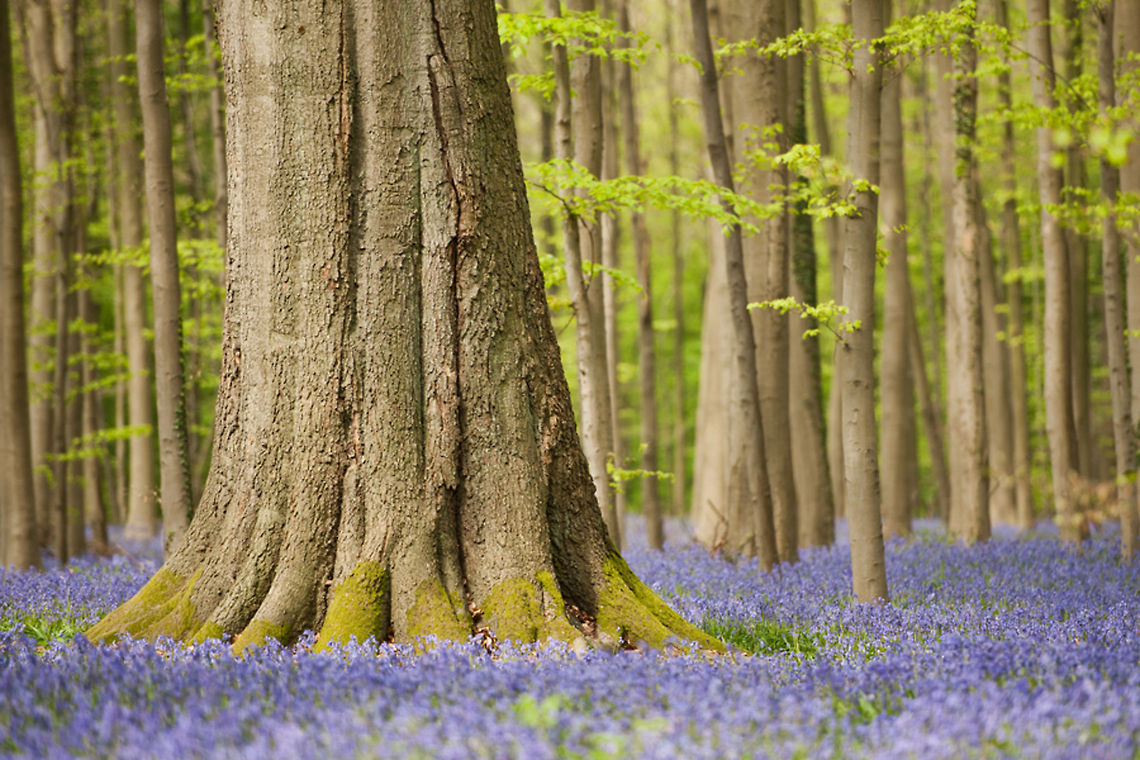
''Hyacinthoides non-scripta'' is a bulbous perennial plant, found in Atlantic areas from north-western Spain to the British Isles, and also frequently used as a garden plant. It is known in English as the common bluebell or simply bluebell, a name which is used in Scotland to refer to the harebell, ''Campanula rotundifolia''.
Similar species: Agaves, Aloes, Onions
By Wendy
All rights reserved
Uploaded Apr 22, 2011. Captured in Zwarte Notelaarsdreef, 1500 Halle, Belgium.


comments (4)
This is Hallerbos, the Blue Forest of Belgium! Every spring, a lush, dreamlike carpet of delicate bluebells (Hyacinthoides non-scripta) engulfs this forest. Bluebells are spring-flowering, perennial plants that thrive under beech trees (Fagus sp.). From late April to May, the woods are transformed into a fairytale by the millions of bluebells that bloom before the tree canopy closes in the forest. The beautiful sea of bluebells mingles perfectly with the trees and wildlife that wander the of 552 ha (1,360 acres) forest. The flowers fill the air with fragrance and provide a magical, sensory experience. These bluebells have been there for centuries, even though most of the trees have not. The original oak (Quercus sp.) and beech (Fagus sp.) trees were destroyed during World War I by occupying forces. Some of the ancient trees survived, but most in the forest today were planted between 1930 and 1950. Thanks to these efforts, the Hallerbos has survived and has been thriving ever since! {Spotted in Belgium by JungleDragon user, Wendy} #JungleDragon Posted 6 years ago